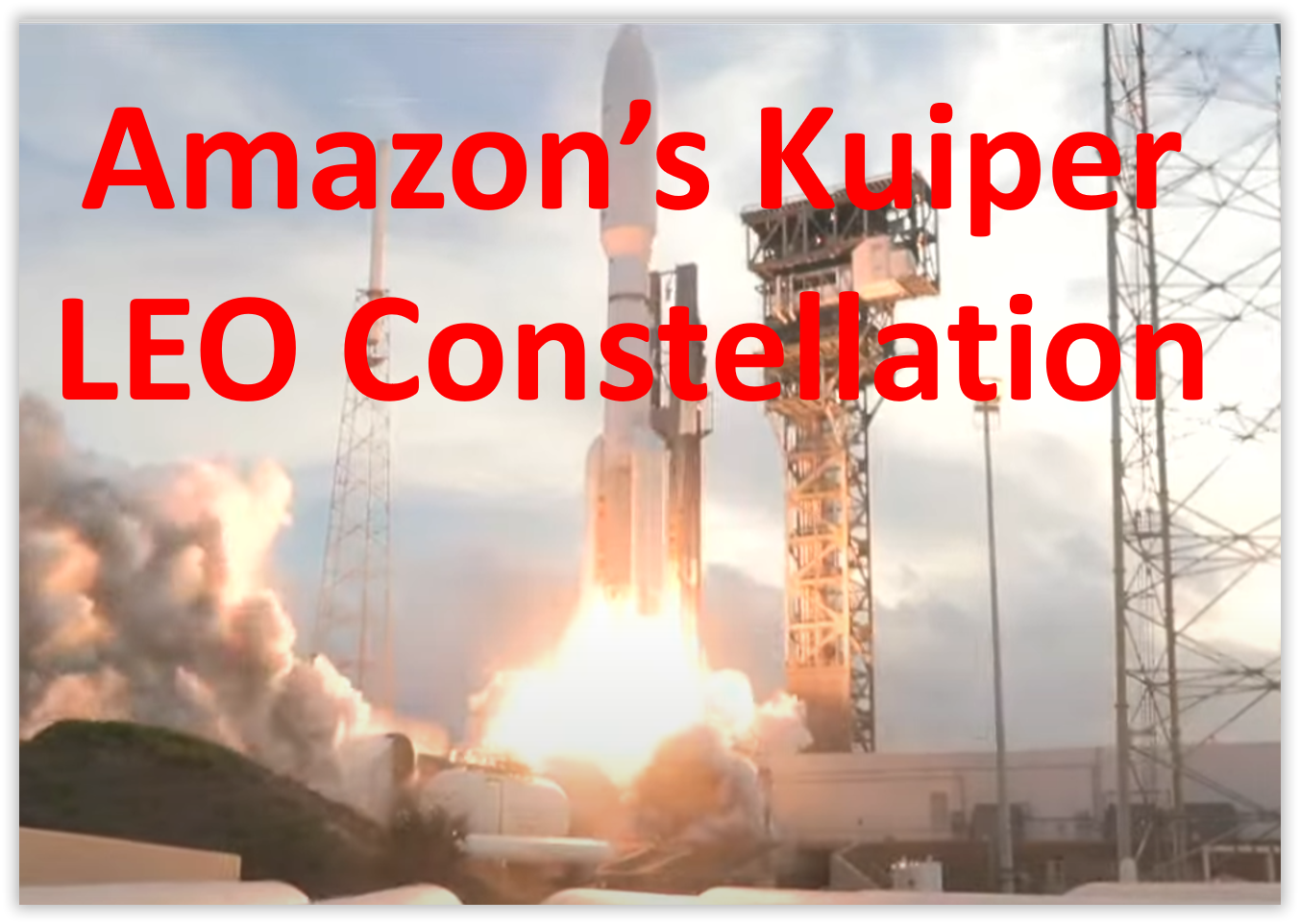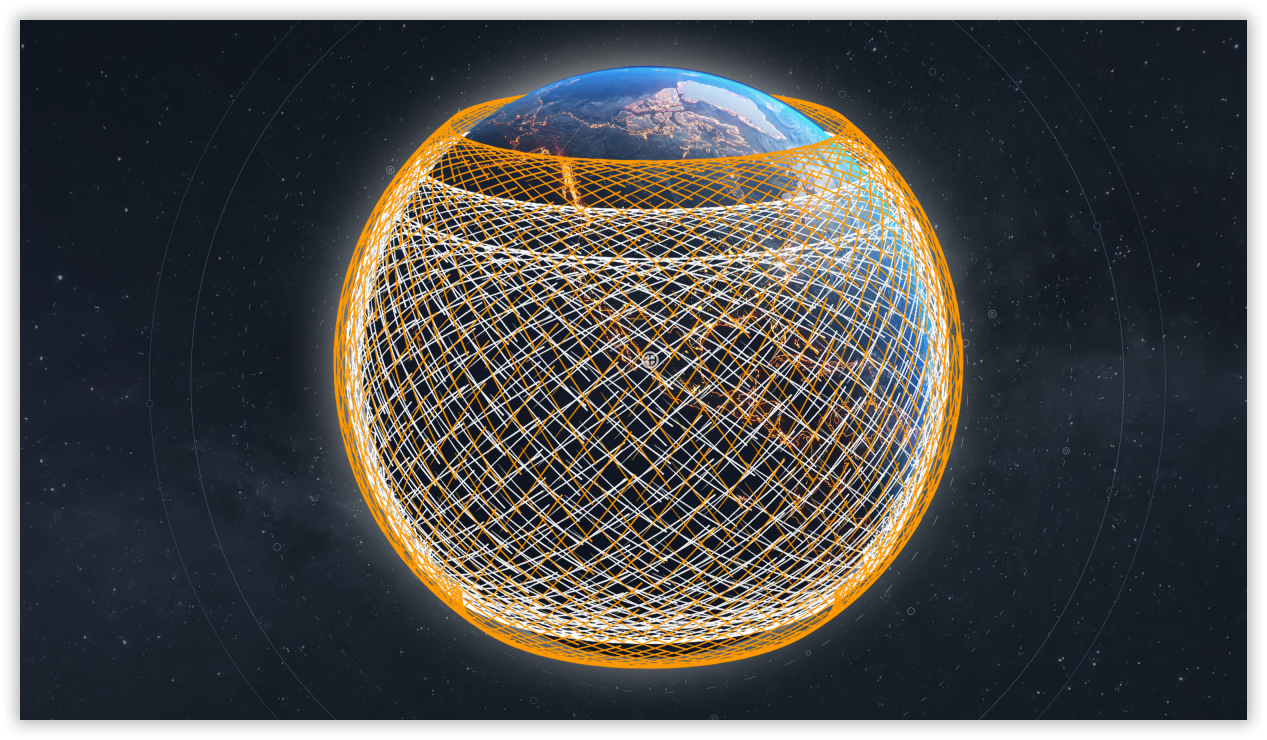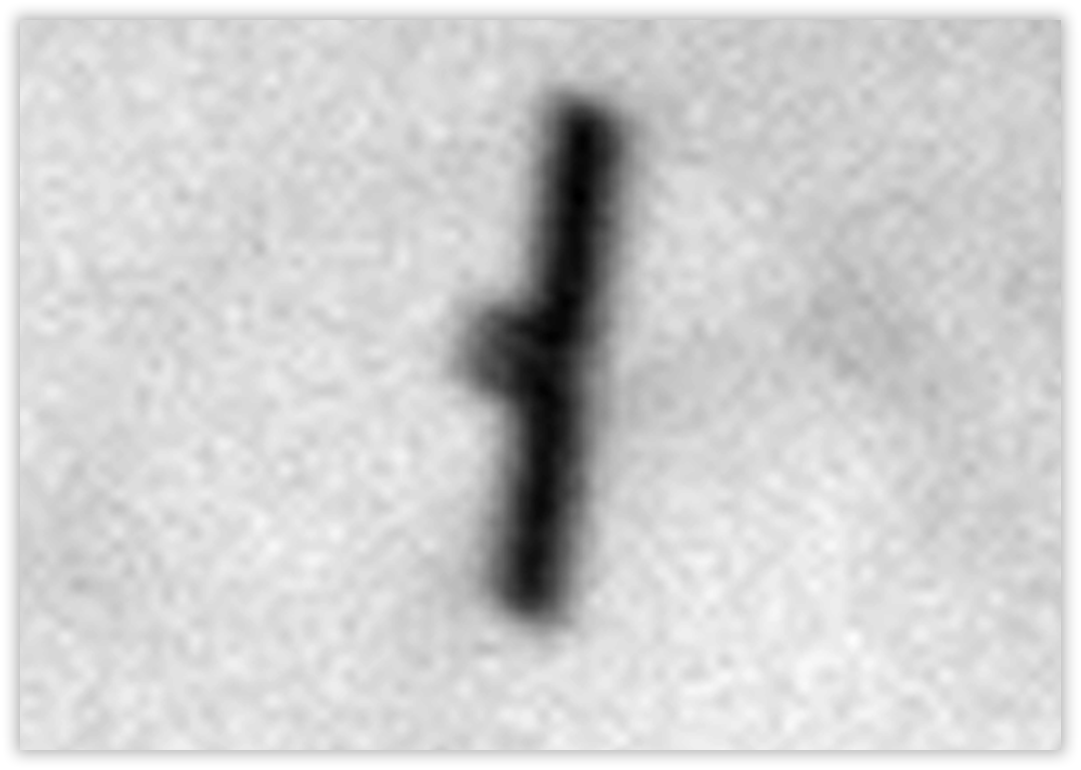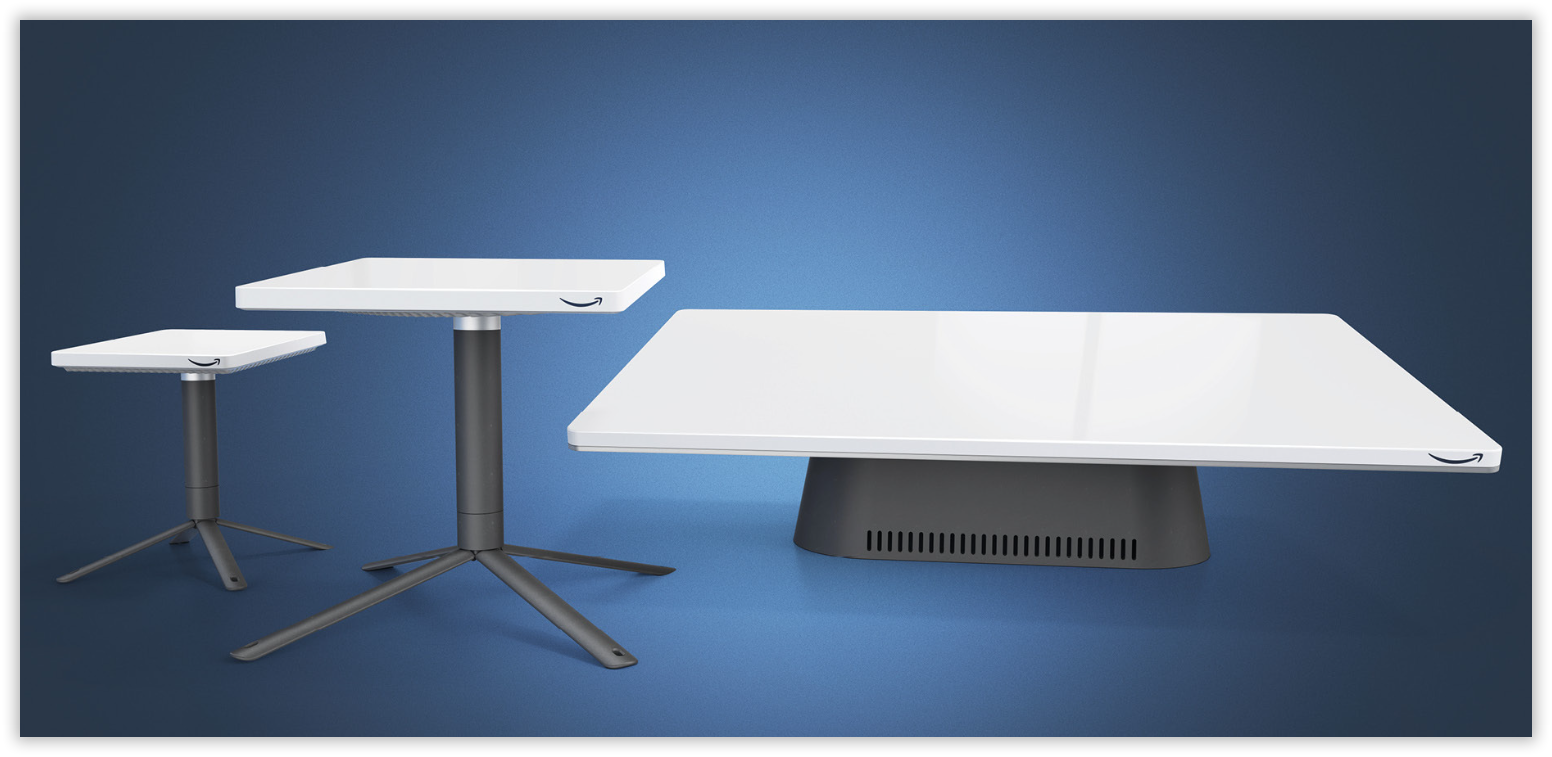
3rd May Update: Rajeev Badyal, Amazon’s VP of Technology, belatedly posted a video showing the launch of the Kuiper satellites at the end of the mission on LinkedIn – “The sequence takes about 15 minutes to complete, and all satellites were successfully deployed right on time 36 minutes into the mission.”
It’s a phrase we all know – “you wait for ages for a bus and then along come three in a row!” That is undoubtedly the case with LEO constellations these days.
Project Kuiper started as an internal code name for the program, and it stuck. The name refers to the Kuiper Belt, a region of the solar system beyond the eight major planets. The Kuiper Belt itself is named after the late Dutch astronomer Gerard Kuiper, who is considered by many to be the father of modern planetary science. Amazon has said it will invest US$ $10 billion to build out the constellation.
At 00:01 on Tuesday, April 29th, 2025, the first 27 operational Amazon Kuiper LEO satellites were launched from Cape Canaveral Space Force Station in Florida in a United Launch Alliance (ULA) Atlas 5 V551 rocket in a mission designated as KA-1. Watching such a launch is always highly impressive and makes us marvel at what technology can do.
Amazon exhibits a very high degree of secrecy about the technology being deployed in the Kuiper Project, which sadly resulted in Amazon cutting video coverage before the LEO satellites were launched into their initial orbits.
Amazon Kuiper’s Launch 00:01 April 29th 2025
The launch will deploy the first 27 satellites into low Earth orbit, marking the beginning of Amazon’s plan to establish a constellation of 3,236 satellites to deliver global broadband internet coverage.
The KA-01 mission follows the successful deployment of two prototype satellites in October 2023. Amazon aims to have at least half its satellite constellation operational to meet regulatory commitments by July 2026. The deployment of this initial batch is a significant step toward Amazon’s goal of providing fast, reliable internet to customers and communities worldwide, particularly in unserved and underserved areas.

Project Kuiper deployment roadmap
October 2023: Amazon launched the first two prototype satellites on October 6th, 2023, for their “Protoflight” mission. According to Amazon, these early tests were 100% successful within 30 days, so deorbiting Kuipersat-1 and Kuipersat-2 began later in the year. Amazon used the active propulsion systems onboard the satellites to execute a series of manoeuvres that, combined with natural drag from the Earth’s atmosphere, gradually lowered the satellites to an altitude of around 350 kilometres. At that point, atmospheric ‘demise’ occurred.
April 2025: The first 27 operational satellites were launched at 00:01 on April 29th 2025.
mid-2026: The first 578 satellites must be launched by (an FCC license condition).
July 2029: The whole constellation must be deployed to maintain the license.
To achieve this, the company has secured up to 83 launches over the next decade with various providers, including:
- United Launch Alliance (ULA): 38 launches on the Vulcan Centaur rocket.
Arianespace: 18 launches on the Ariane 6 rocket. - Blue Origin: 12 launches on the New Glenn rocket, with options for 15 additional flights.
- SpaceX: Amazon has contracted for three launches with SpaceX’s Falcon 9.
Amazon has established a satellite production facility near Seattle, Washington, with a planned capacity to produce up to five satellites daily. However, as of early 2025, production was reported to be under one satellite per day.
In comparison, as of April 2025, Starlink has launched over 8,000 Starlink satellites, with approximately 7,264 remaining in orbit. The company has received regulatory approval from the U.S. Federal Communications Commission (FCC) to deploy up to 12,000 satellites, with plans to extend this number to 34,400.

Key Orbit Details:
The first 27 Kuiper satellites are not planned to operate in a north-south (polar) orbit. Instead, they will use three inclined non-polar orbits to provide broadband internet coverage, similar to the Starlink system.
- 590 km (at 33° inclination)
- 610 km (at 42° inclination)
- 630 km (at 51.9° inclination)
These orbits are optimised to provide service across mid-latitude regions where most of the world’s population lives. Starlinks’ main shell is at ~550 km with inclinations of ~53°, 70°, 97.6°, and 43°.
The first 27 satellites are deployed in the highest orbital shell at an altitude of 630 km. This strategic choice allows Amazon to begin service rollout in mid-latitude regions, including areas like the UK. Future satellite deployments will populate the lower altitude shells to expand coverage toward equatorial and lower-latitude regions.

Image source: Amazon.
The satellites are managed by a 24/7 mission operations centre in Redmond, Washington. They complete a full orbit approximately every 90 minutes at speeds exceeding 17,000 miles per hour.
OneWeb’s shell is at ~1,200 km with an inclination of 87.9°, providing a near-polar orbit for global coverage. North-south orbits pass over both poles. They are often used for Earth observation, reconnaissance, and weather satellites, not for communications constellations aiming for continuous service in populated regions like Starlink or Amazon Kuiper.

Primary Coverage Focus
Kuiper has stated its coverage is focused on Mid-latitude regions (roughly ±50–55° latitude), including North America, Europe, India, Parts of South America, Northern Africa and much of Asia
The first 27 satellites launched a few days ago are concentrated in the highest orbital shell at an altitude of 630 km with an inclination of 51.9 degrees. This strategic choice allows Amazon to begin service rollout in mid-latitude regions. Future satellite deployments will populate the lower altitude shells to expand coverage toward equatorial and lower-latitude regions.
“This Analysis mason NCAT5-generated video simulation (accelerated 60X) provides a visual representation of how the Project Kuiper LEO constellation will appear once the three Ka-band Gen-1 shells are fully deployed. Additionally, the video highlights potential (unconfirmed) locations for gateway stations, possibly situated at or near Amazon Web Services (AWS) availability-zone data centres.”
Source: , MegaConstellations Group, LinkedIn
The interesting question to ask at this juncture is how good the coverage of the Falkland Islands will be with its latitude of 51.7° South, and when? The Falklands may be on the fringe or just outside reliable Kuiper service, meaning that coverage might be intermittent or weak, especially at lower satellite elevation angles.

Proposed download speeds and costs
It is still very early days, and there are no hard facts in the public domain, but Amazon has stated:
“The ultra-compact model provides download speeds of up to 100 Mbps, our standard model delivers up to 400 Mbps, and the largest model, which is intended for enterprise, government, and telecommunications applications, provides up to 1 Gbps.”
“Amazon hasn’t announced pricing details yet, but affordability is a key principle of Project Kuiper. Amazon has a longstanding commitment to low prices, and lots of experience building popular, low-cost devices like Echo Dot and Fire TV Stick. We’re applying a similar approach with Project Kuiper. We also know customer needs will vary quite a bit around the world, and our service offerings may vary from country to country with the right pricing and service for customers in each region.”

Satellite features
As expected, Kuiper satellites have a technology feature set similar to that of Starlink satellites. However, Amazon is ultra-secretive about its satellites’ technologies, and no image of a Kuiper satellite has been provided. The only image available is a pretty uninspiring one, taken by HEO space in 2023.

Phased Array Antennas (Active Electronically Scanned Arrays)
- Used for both user terminal links (Ku-band) and ground station links.
- These can dynamically steer beams electronically without physical movement.
Advanced Onboard Processing (OBP)
- This includes signal processing, routing, and network management on a satellite.
- Enables intelligent packet switching, load balancing, and localised rerouting.
Propulsion System
Kuiper satellites are believed to use electric propulsion, likely Hall-effect thrusters, though Amazon hasn’t confirmed the exact type. Starlink uses krypton-fueled Hall-effect thrusters (Gen 1) and improved electric propulsion in Gen 2.
Optical Inter-Satellite Laser Links (OISLs or LISLs)
- Laser links will be included on every satellite in its constellation to form a mesh network in space.
- This will enable direct data routing between satellites, reducing reliance on ground stations.
-
LISLs are key for latency reduction.

User terminals

Three main terminals are being proposed, although specialised ruggedised ones are aimed at military use.
Standard Residential Terminal
- Size: Around 28 cm in diameter (similar to Starlink’s original Gen 1 dish).
- Purpose: Designed for home users and small businesses in rural or underserved areas.
-
Self-installation: Consumers can install the terminal using a simple setup guide and auto-alignment features.
2. Compact Residential Terminal
- Size: It is around 18 cm in diameter, smaller and more portable than the standard version.
- Purpose: Targeted at users with limited space.
- Low power consumption of ~10W.
- Includes Wi-Fi for local distribution.
-
Portability: This feature is ideal for travellers, small homes, or mobile units.
3. High-Performance Enterprise Terminal
- Size: Larger than the consumer models, likely similar to Starlink’s Business-grade terminal.
- Purpose: Designed for larger-scale users such as enterprises, government, and institutional customers who require higher bandwidth and reliability.
- High throughput with beamforming and multiple simultaneous beams.
- Higher power consumption (~40- 100w) depending on the setup.
- Multiple Wi-Fi access points or direct Ethernet connections.
- Multiple users: Can serve more users within a building, office, or enterprise environment.
- Reliability: Built for higher uptime and more robust connections.
- Can support larger bandwidth needs for business applications.

Amazon’s Kuiper in South America.
In February 2024, Argentina’s National Communications Entity (ENACOM) authorised Project Kuiper to operate within the country. This approval allows Amazon to offer fixed or mobile, wired or wireless, national or international information and communications technology services. While specific ground station locations in South America have not been publicly disclosed, Amazon operates AWS Ground Station facilities in Punta Arenas, Chile. These stations are part of Amazon’s global network of ground stations, which support satellite communications and are integral to services like Project Kuiper.
“Amazon’s Project Kuiper plans to establish satellite internet coverage across South America through a partnership with Vrio Corporation, the parent company of DIRECTV Latin America and Sky Brasil. This collaboration aims to provide high-speed, low-latency internet services to residential customers in seven countries: Argentina, Brazil, Chile, Uruguay, Peru, Ecuador, and Colombia. The service is expected to commence in mid-2025, starting with Argentina” (Ed. this sounds rather optimistic)

Conclusions
Given the Falkland Islands’ latitude of 51.7° South, they will likely be on the edge of reliable service from Amazon’s Project Kuiper constellation. As a result, coverage in the region may be intermittent or weak, especially when satellites are at low elevation angles during passes. Residents and businesses in the Falklands will likely have to wait and see how the constellation evolves regarding consistent connectivity. Starlink is designed to provide service between ±53° latitude, which works fine.
Launching the first 27 operational Kuiper satellites is a significant milestone, but full global coverage and complete occupation of the three elevations will take several years. As Kuiper’s constellation grows, regions like the Falklands could see improved coverage, especially if more satellites are launched to fill gaps. However, until then, the service may not reach its full potential in this region.
If the constellation expands successfully, it could bring a second high-speed LEO-based Internet to the Falkland Islands. While the Falklands’ geographic location may limit initial service, there is hope that Kuiper’s network will eventually improve connectivity. The region may have to remain patient as the constellation develops and more satellites are launched.

Chris Gare, OpenFalklands May 2025, copyright OpenFalklands

Power requirements seem reasonable, but the 33° inclination seems a bit odd. I wonder how that will work with having to NOT interfere with Geostationary Satellites.
But, yeah, nice to see options coming along – that will pressure Starlink to revisit and reduce their prices, especially if roaming becomes an area of contention.